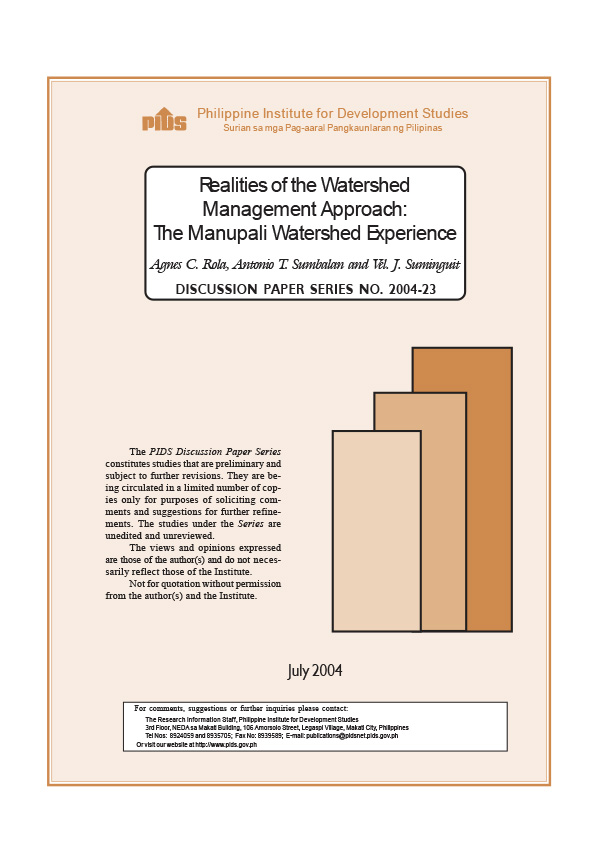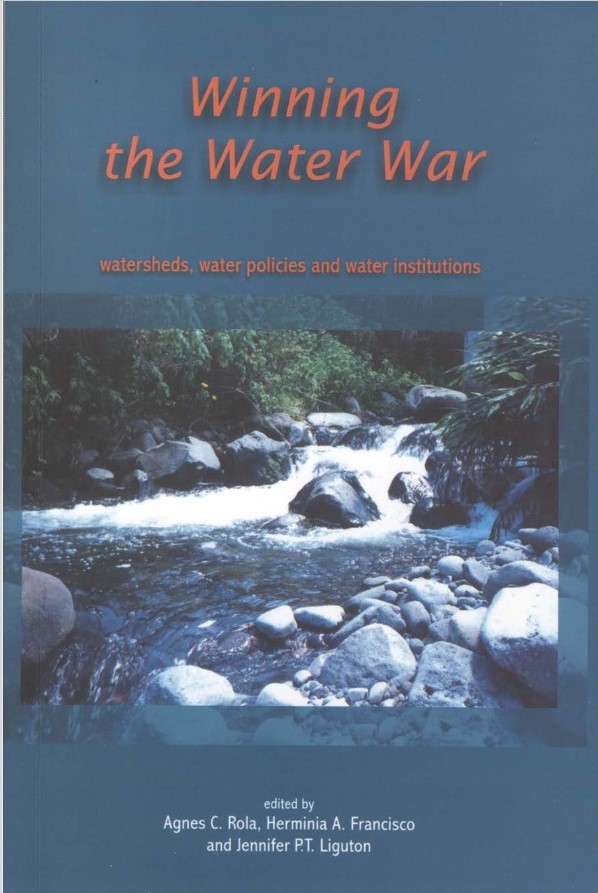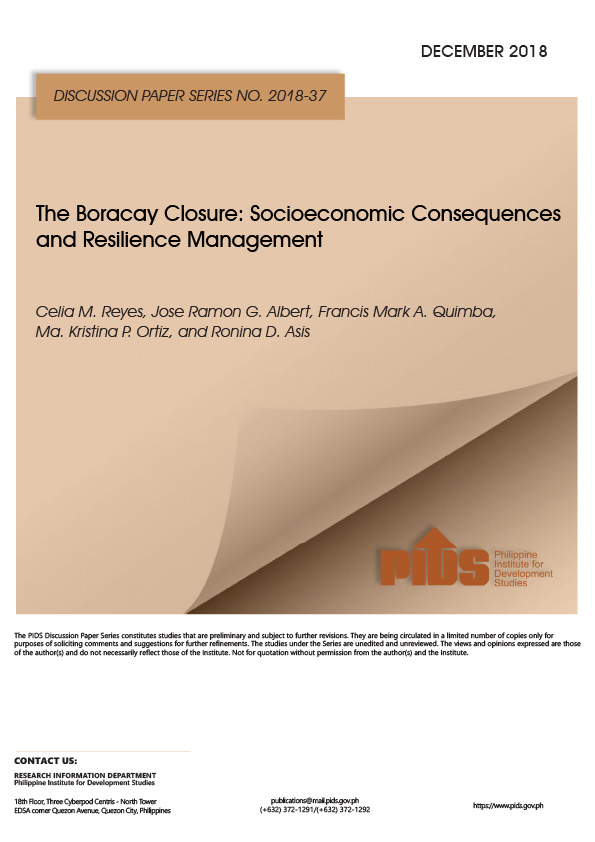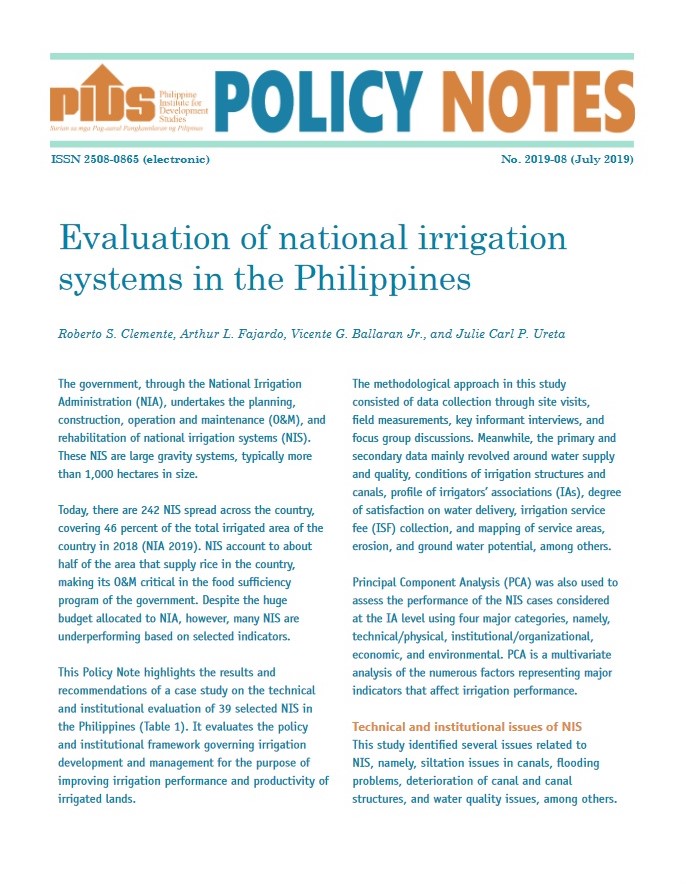Local research in the Manupali watershed, with about 60% of its land area belonging to the upland municipality of Lantapan, Bukidnon, found that water quantity and quality declined due to soil erosion and domestic waste contamination. As population grows and agriculture becomes more integrated to the market, water deterioration is projected to worsen. Both economic and environmental sustainability then depend on the following management bodies: 1) the management of the Mt. Kitanglad range, the headwaters of the Manupali, 2) management of the tributaries that are within the agricultural areas of Lantapan and 3) the management of the bigger watershed cluster to where Manupali belongs. The first two management entities have management plans in place; with some funding pledges for the Mt. Kitanglad Range Natural Park (a protected area by law) Management Plan. The Lantapan municipality watershed management plan still needs funding support and an institutional body that can implement said plans. The bigger watershed cluster plan(Upper Pulangi) is being developed and success in the management depends in part on the commitment of the several communities that compose this cluster. Some of the challenges that were identified in implementing the several watershed management plans charged with sustainability of the Manupali are financial sustainability, limited economic instruments, weak property rights, lack of administrative mechanisms, human capital and institutional constraints, and a legal basis for the management structure.
Citations
This publication has been cited 2 times
- Dapin, Indie, Victor B. Ella. 2023. GIS-based soil erosion risk assessment in the watersheds of Bukidnon, Philippines using the Rusle model. Sustainability, 15, No. 4, 1-15. MDPI.
- Rola, Agnes C. and Herminia A. Francisco. 2004. Realities of watershed management in the Philippines: Synthesis of case studies. Discussion Papers DP 2004-24. Philippine Institute for Development Studies.













